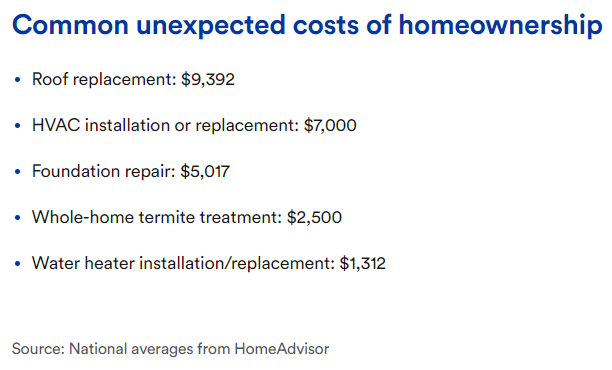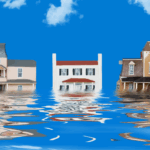According to a new report form Bankrate, some 19% of surveyed homeowners say they’ve taken on debt to pay for maintenance and other “hidden” costs of homeownership and alternatively 24% say they have purposely set aside money for home repairs and maintenance.
Basically, if you own a home, surprise repairs are a financial fact of life and most people have two choices: take on debt to pay for repairs or to use savings—and those lucky enough to have cash on hand to pay for it do so that way.
But, you can prepare for the inevitable by saving, understanding the standard lifespans of your appliances and home features, and most importantly, maintaining an adequate homeowners insurance policy.
According to Bankrate, the best way to absorb unexpected bills is to stash money in high-yield savings account.
“When it comes to paying the inevitable expenses associated with homeownership, prioritizing savings is the key to avoiding a domino effect of further borrowing costs,” says Mark Hamrick, Bankrate’s chief economic analyst.
That’s not always a realistic solution, especially in today’s high-inflation environment. However, in most people’s case, when they are hit with a big bill for home repairs, they are also facing other expenses, including car repairs and other regular maintenance.
If you’re lucky enough to be offered a no-interest financing package for period of time (typically six months to a year), that is a good choice to take, but once trial period ends, many take out a home equity loan (a type of second mortgage) from a provider.
The move was one familiar to many American homeowners. Fully 19% say they have taken on debt to cover the costs of unexpected home repairs, according to the Bankrate survey. Some 31% of Generation Z and 26% of millennials have borrowed to cover home repairs, and 31 percent of parents with children younger than 18 have taken on debt.
Of the 19% of homeowners who have taken on some form of debt to cover the hidden costs of homeownership:
- 60% say they took on credit card debt
- 33% got personal loans
- 25% took second mortgages.
Taking on debt for home repairs isn’t a terrible idea—the repairs are designed to improve the functionality and value of your home for many years, so the benefits are certainly longer-lasting than borrowing to take a vacation.
Still, rising interest rates have increased the financial pain associated with borrowing to fund home repairs.
The average rate on a home equity line of credit averaged 9.17% as of May 15, while the typical rate on a home equity loan averaged 8.66%, according to Bankrate’s national survey of lenders. Meanwhile, running a credit card balance means paying an interest rate north of 20% in most cases.
“The hidden costs of homeownership serve as another in a long string of arguments in favor of prioritizing savings,” says Hamrick. “Emergency savings accounts and rainy-day funds provide self-insurance against the inevitable expenses that are simply just part of life, including for homeowners.”






